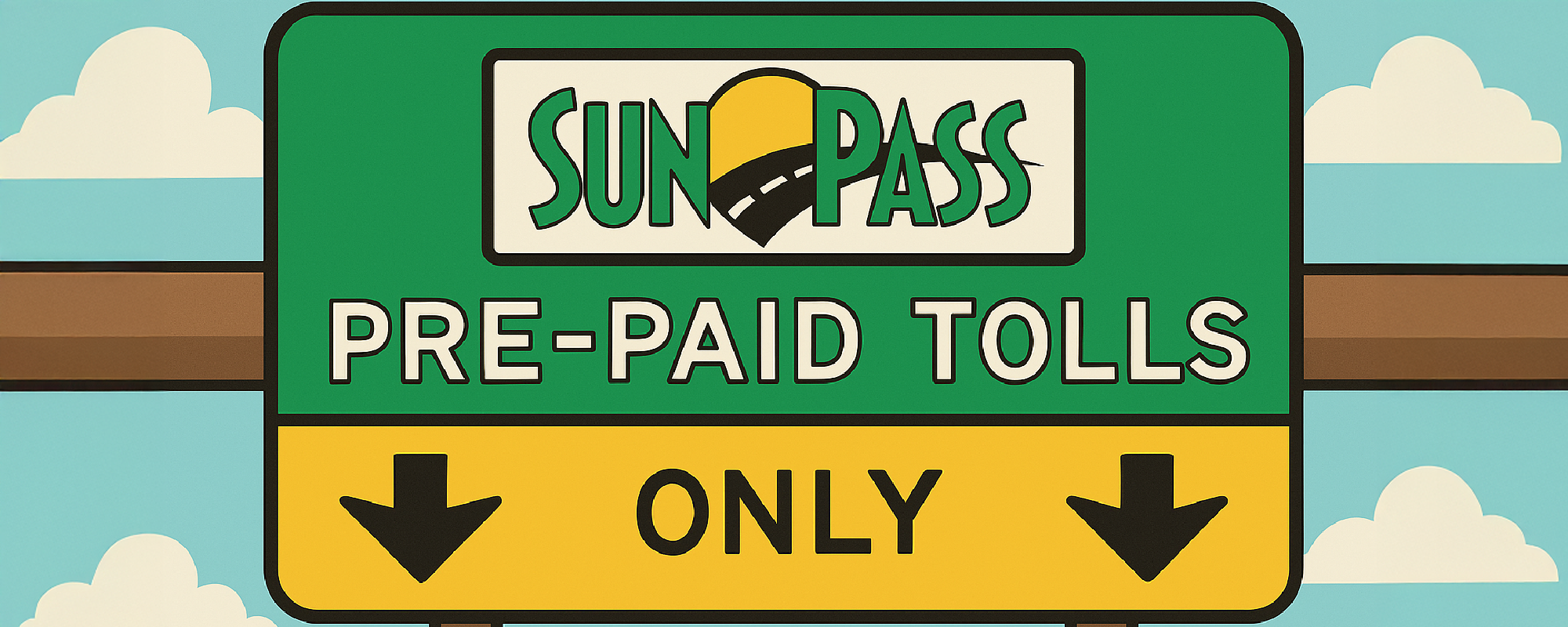Estimated reading time: 5 minutes

As tourists flock to Orlando, Florida, for a magical vacation at Walt Disney World, they often find themselves navigating unfamiliar roads and toll systems. One of the most frustrating aspects of driving in Florida is the SunPass toll system, which can leave visitors feeling trapped and confused. From unmanned toll booths to unexpected fees, the SunPass system is designed in a way that can be detrimental to tourists who are not familiar with its intricacies.
One of the most significant issues with the SunPass system is the lack of transparency and clear signage. Many tourists are unaware that they need to have a SunPass transponder or pay tolls online, and the signage on the highways often does not clearly indicate which toll booths are staffed or which payment options are available. This lack of information can lead to confusion and frustration, especially for drivers who are already stressed from navigating unfamiliar roads.

The Problem with Unmanned Toll Booths
Unmanned toll booths are a particular problem for tourists. These booths are often marked with signs that indicate “exact change only” or “toll by plate,” but they may not clearly indicate that they are unstaffed. When drivers arrive at the toll booth, they may find that they have no way to pay the toll, as many of these booths do not accept cash. This can be especially problematic for tourists who do not have a SunPass transponder or other electronic toll payment method.
The lack of staffing at these toll booths can also lead to long delays and confusion. Drivers may be forced to wait for extended periods of time for staff to arrive, or they may be unsure of what to do next. In some cases, drivers may even be forced to reverse direction or take an alternate route, which can add to the stress and frustration of driving in Florida.
The West Osceola Parkway Offramp: A Trap for Disney World Visitors
One of the most notorious examples of an unmanned toll booth is the offramp from SR 417 (Central Florida Greenway) to West Osceola Parkway. This offramp is a primary route to the Disney World theme parks and resorts, and many drivers may not be familiar with the area or the toll system. When drivers take this offramp, they may be surprised to find an unmanned toll booth that does not accept cash. The signs on the highway may not clearly indicate that the toll booth is unstaffed or that cash is not accepted, leaving drivers with no option but to proceed through the toll booth without paying or risk being fined.

This toll booth is particularly problematic because it is located on a major route to Disney World, and many drivers may be under time pressure to get to their destination. The unexpected toll booth can catch drivers off guard, and the stress of navigating unfamiliar roads and dealing with unexpected tolls can add to the frustration of an already long day at the theme parks.
The Consequences of Getting Caught in the SunPass Trap
The consequences of getting caught in the SunPass trap can be severe. Drivers who are unable to pay tolls may face fines and penalties, which can add up quickly. In some cases, drivers may even face collections agency action or damage to their credit score. The stress and frustration of dealing with unexpected tolls and fees can also ruin a vacation and create a negative experience for tourists.
Tips for Avoiding the SunPass Trap

While the SunPass system can be frustrating for tourists, there are steps that drivers can take to avoid getting caught in the trap. Here are a few tips:
- Research the toll roads and exits in advance to understand which ones have unmanned toll booths
- Consider using alternative routes to avoid toll roads
- Use electronic toll payment methods, such as SunPass
- Be aware of signage and notifications about toll booths and payment options
- Plan ahead and research the toll roads and exits in advance
Conclusion
The SunPass toll system is a complex and often frustrating system for tourists. From unmanned toll booths to unexpected fees, the system is designed in a way that can be detrimental to visitors who are not familiar with its intricacies. By understanding the system and taking steps to avoid getting caught in the trap, drivers can minimize their stress and frustration and enjoy a more pleasant vacation experience. However, more needs to be done to improve transparency and clarity around the SunPass system to prevent tourists from getting trapped.
In conclusion, the SunPass system is a prime example of how a well-intentioned system can be poorly designed and implemented. By taking steps to improve transparency and clarity, the Florida Department of Transportation and other authorities can help to reduce the stress and frustration of driving in Florida and create a more positive experience for tourists. Until then, drivers will need to be vigilant and prepared to navigate the complex and often frustrating world of SunPass.
